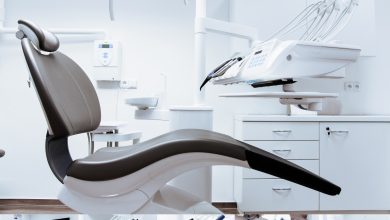Are Dental Caries Cavities?

Tooth decay, also known as dental caries, is the disease commonly referred to as cavities. It is caused by bacteria in the mouth that feed on sugars and produce acids, which attach to the enamel of the teeth.
What Are Dental Caries?
Are dental caries the same as cavities? Tooth decay is the disease known as caries or cavities. Tooth decay is caused by certain bacteria in the mouth that thrive on sugars and refined carbohydrates and produce acids as a side effect. The acids attach to the hard outer layer of your tooth (enamel) first.
In short, dental fillings are used to treat cavities because a dentist tends to want to remove the decayed part (the cavity) and fill it to stop any further damage from occurring. While there aren’t ways to remove a cavity without using a filling, there are ways to almost reverse the decay.
Dental caries is a prevalent chronic infectious disease resulting from tooth-adherent cariogenic bacteria that metabolize sugars to produce acid, which over time demineralizes tooth structure. Cavities, also called tooth decay or caries, are caused by a combination of factors.
Understanding Cavities
Are dental caries the same as cavities? Tooth decay is the disease known as caries or cavities. Tooth decay is caused by certain bacteria in the mouth that thrive on sugars and refined carbohydrates and produce acids as a side effect. The acids attach to the hard outer layer of your tooth (enamel) first.
In short, dental fillings are used to treat cavities because a dentist tends to want to remove the decayed part (the cavity) and fill it to stop any further damage from occurring. While there aren’t ways to remove a cavity without using a filling, there are ways to almost reverse the decay.
Must-know classifications of dental caries include:
| Class I | Pit and fissure caries on occlusal surfaces of molars and premolars |
| Class II | Caries on the proximal surfaces of premolars and molars |
| Class III | Caries on the proximal surfaces of canines and incisors |
| Class IV | Caries on proximal surfaces and the incisal angle of incisors, canines, premolars, and molars |
| Class V | Caries on gingival third of the facial or lingual surfaces of any tooth |
| Class VI | Caries on the incisal edges of anterior teeth and cusp tips of posterior teeth |
Dental caries is a prevalent chronic infectious disease resulting from tooth-adherent cariogenic bacteria that metabolize sugars to produce acid, which over time demineralizes tooth structure. Cavities, also called tooth decay or caries, are caused by a combination of factors, including poor oral hygiene, a diet high in sugary foods and drinks, and genetic susceptibility.
Dental Caries Vs Cavities: Are They The Same?
| Are dental caries the same as cavities? |
| Tooth decay, also known as dental caries or cavities, is a disease caused by certain bacteria in the mouth. These bacteria thrive on sugars and refined carbohydrates, producing acids that attack the hard outer layer of the tooth enamel. Initially, the acids attach to the enamel, but over time they can penetrate deeper into the tooth, forming cavities. |
| Do dental caries need to be filled? |
| Dental fillings are commonly used to treat cavities, as dentists often remove the decayed part (the cavity) and fill it to prevent further damage. However, there are ways to reverse the decay and treat cavities without using fillings. |
| How are dental caries classified? |
| Dental caries can be classified based on various factors such as location, extent, and severity. Classifications include pit and fissure caries, smooth surface caries, and root caries. |

Credit: www.choice-dental.com.au
Frequently Asked Questions Of Are Dental Caries Cavities?
Are Dental Caries The Same As Cavities?
Dental caries and cavities are the same thing. Tooth decay, caused by bacteria in the mouth, leads to cavities. Acids produced by the bacteria attack the enamel of the tooth, resulting in a cavity.
Do Dental Caries Need To Be Filled?
Dental caries, also known as cavities, are caused by bacteria in the mouth that produce acids, which attack the enamel of the teeth. While it is not necessary to fill all dental caries, dentists usually recommend filling cavities to prevent further damage.
However, there are ways to reverse the decay in some cases.
How Do You Classify Dental Caries?
To classify dental caries, they are the same as cavities and refer to tooth decay caused by bacteria in the mouth. The bacteria produce acids that attach to the enamel, leading to the development of tiny openings or holes. Classification is based on factors like location, severity, and extent of decay.
What Is Dental Caries In Teeth?
Dental caries, also known as tooth decay or cavities, is a disease caused by bacteria in the mouth that produce acid from sugars, which damages the outer layer of the tooth. Fillings are used to treat cavities and prevent further damage.
Tooth decay is a chronic infectious disease that demineralizes tooth structure over time.
Conclusion
Tooth decay, commonly known as dental caries or cavities, occurs when bacteria in the mouth feed on sugars and produce acids that attack the enamel of your teeth. Although tooth decay is the same as cavities, not all dental caries need to be filled.
While fillings are often used to treat cavities, there are ways to reverse decay and prevent further damage. Understanding the causes and classifications of dental caries is essential for maintaining good oral hygiene. By practicing effective oral care and seeking regular dental check-ups, you can minimize the risk of developing cavities and maintain a healthy smile.





